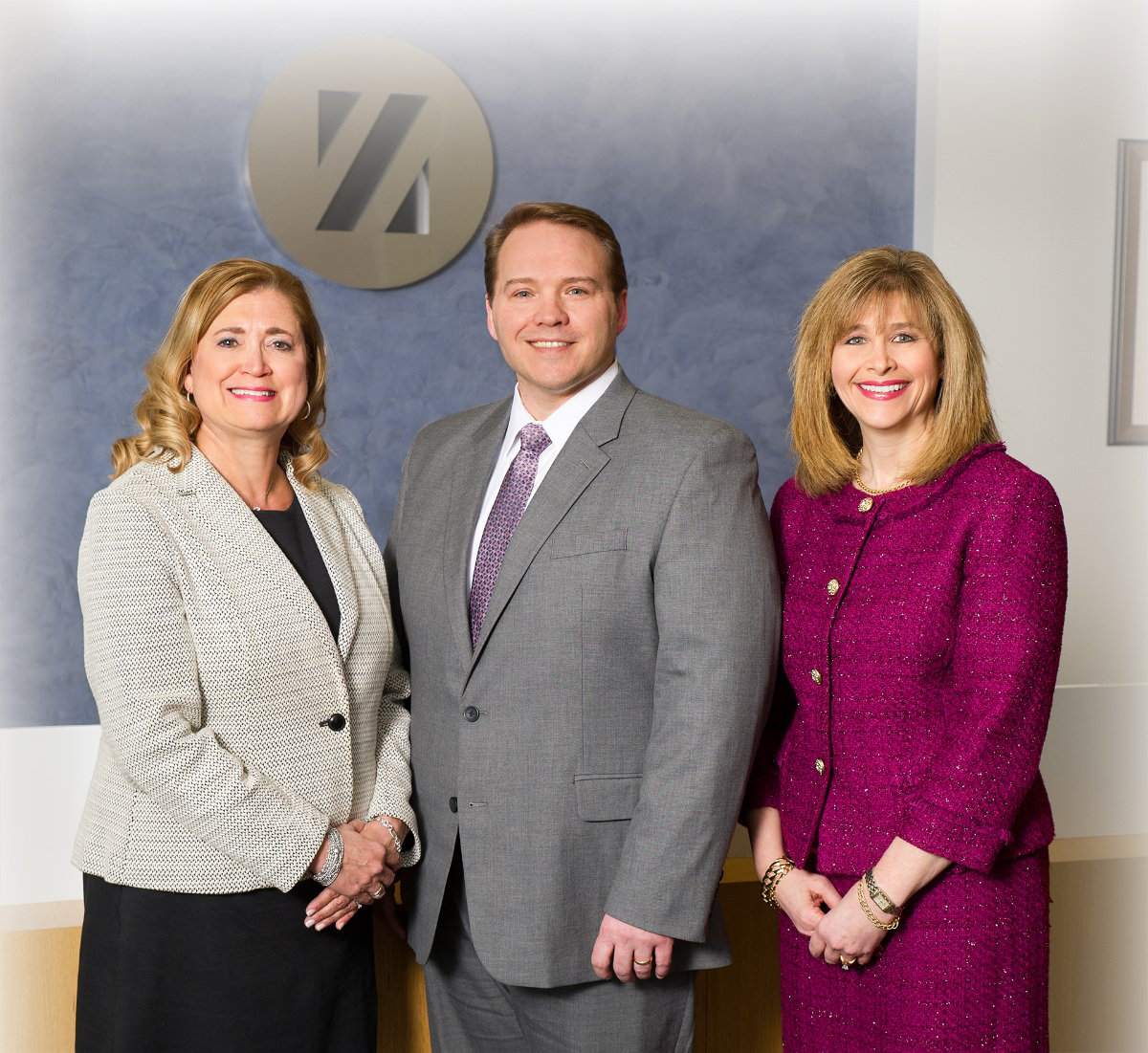What you need to know about required minimum distributions.
Relief from a Tax Penalty You May Not Have Even Known About
Zinner & Co. Tax Department Taxes - Planning, Rules and Returns , Retirement Planning & IRAsDid you know that small businesses that fail to file their annual retirement plan returns can face hefty fines of up to $15,000 per return? Our tax team has helped small businesses plan and prepare their annual plan returns.
Fortunately, the Internal Revenue Service recognizes that some businesses may not even realize that this requirement applies to them. As a result, a tax penalty relief program allows them to pay $500 per return for late filings, up to a maximum of $1,500. The relief is aimed at small businesses whose plans cover a 100% owner or partners in a business partnership, and their spouses.
The U.S. Department of Labor also has a relief program for businesses that have employees. If you’re not sure whether the requirements—or the relief programs—apply to you, be sure to contact us. We can offer advice on how to remain in compliance with critical regulations and minimize your tax outlays.
Does the Sept. 30 IRA Beneficiary Deadline Apply to You?
Zinner & Co. Tax Department Retirement Planning & IRAsSeptember 30 marks another key date on the calendar regarding action needed to properly manage your own or an inherited IRA.
If a loved one has passed, the final determination of who the “designated beneficiaries” of a that individual's IRA are must be completed by September 30 of the year following that person's death.
Related read: Important Considerations for Non-Spouse Beneficiaries
This determination is required for purposes of calculating the Required Minimum Distributions ("RMD") from a decedent’s IRA. A “designated beneficiary,” (a term defined in the Internal Revenue Code) is one who is set to receive IRA assets when the account owner dies and to any trusts that may list specific requirements.
Should I Set Up a SIMPLE IRA For My Employees?
Zinner & Co. Tax Department Taxes - Corporate & Business , Retirement Planning & IRAsThe October 1st deadline is fast approaching...
If you have less than 100 employees, you have until October 1 to set up a SIMPLE IRA plan for you and your employees. Keep in mind that you can't have another qualified retirement plan (example: a 401(k), 403(b), profit sharing, or defined benefit plan) and a SIMPLE IRA.
Are Your Retirement Plan Assets Protected?
Robin Baum, CPA, Managing Partner Retirement Planning & IRAs , Estates, Gifts & Trusts , Robin BaumBased on presentation by Robin Baum at the 2016 Cleveland Boy Scout Estate Planning Seminar. Article submission to the Ohio Probate Law Journal
Can You Borrow Money from your Retirement Account ... and Should You?
Zinner & Co. Tax Department Taxes - Individual , Retirement Planning & IRAsSo you’ve finally had enough of the hype and are determined to score a pair of tickets to see “Hamilton” for Lin-Manuel Miranda’s final performance as the lead. Tickets selling through ticket brokering sites are going for outrageous prices, and you’re a bit short on cash. Should you embark on a personal revolution and loot your retirement accounts to go?
In a recent article, we addressed the exceptions to the early withdrawal penalty on IRA distributions taken prior to an individual reaching age 59 1/2. In such a case, the IRA distribution would still be subject to federal income tax and, potentially, state income tax, and would result in permanently removing those assets from the IRA, having a negative impact on the availability of future retirement income.
So, if you need a quick cash infusion and do not want to suffer the income tax ramification of an IRA distribution, what can you do? One option would be to take a loan from your retirement account. While an advisor may not typically recommend that an account owner borrow from their retirement account, a loan from one’s retirement can have both benefits and costs, as discussed below:
9 Exceptions to the IRA Early Withdrawal Penalty
Zinner & Co. Tax Department Retirement Planning & IRAsAlmost all of us put money into some type of retirement plan with the goal of one day being able to retire and live comfortably.
Sometimes, though, you find yourself in need of a little extra money for things such as attending college, buying a home, assisting with medical expenses, and the list goes on. So, you decide to take an early IRA distribution to help pay for these expenses. While these are all very important and necessary expenses, understand that once a distribution has been made from an IRA, a taxable event has occurred.
Taxable Event - What it will cost you
In addition to paying income tax on the distribution, there may be an additional 10% penalty on an early distribution that could apply to taxable distributions made before one reaches age 59 ½. Fortunately, there may be some good news; there are a number of circumstances that can result in an exception to the 10% penalty.
Let's take a look at the exceptions to the 10% IRA withdrawal penalty for a distribution prior to age 59 ½ and the circumstances that must occur :
Can You Boost Your Retirement Savings by Going Solo?
Zinner & Co. Tax Department Retirement Planning & IRAsFrom the moment we begin working, the importance of saving for our retirement is drilled into our heads. The benefit of doing so can’t be overstated and, perhaps, takes on even greater significance when we go into business for ourselves. In fact, when one is in business for themselves, finding ways to maximize the amount of retirement savings often becomes one of the primary goals of that business owner.
So, how can a self-employed individual achieve that goal?
By going Solo; opening a Solo 401(k), that is.
What is a Solo 401(k)?
A Solo or individual 401(k) plan is nothing more, really, than a combined profit-sharing plan and 401(k) plan implemented by a self-employed individual or small business owner with no full-time employees. Note that there is an exception where the full-time employee is the owner's spouse.
While the legislation permitting Solo 401(k) plans has been place for fifteen years, having been enacted in 2001, many small business owners are unaware of the benefits of such a plan. Prior to 2001 (and, to a large extent, continuing even today), self-employed individuals and small businesses adopting employer-sponsored retirement plans largely implemented either simplified employee pensions (SEPs) or savings incentive match plans for employees (SIMPLE) IRA plans. These plans generally offered benefits that were somewhat comparable to those offered by profit-sharing plans and 401(k) plans at the time, but without the associated administrative costs.
Since the 2001 legislative changes, though, 401(k) plans have become much more appealing to self-employed individuals and small business owners. In fact, when combined with a profit-sharing plan, 401(k) plans can allow for significant tax-deferred contributions.
Additional reading: The Potential Pitfalls of a Self-directed IRA
When can it be used?
Any private business is allowed to establish a 401(k) plan. However, only self-employed individuals or businesses (including partnerships) with no full time employees can adopt a Solo 401(k) plan as described here. As mentioned earlier, employing your spouse does not prevent you from adopting a Solo 401(k) plan. In addition, if you have only part-time employees who work fewer than 1,000 hours per year, you may also be able to open a Solo 401(k) plan since part-time employees can generally be excluded from participation in the plan.
However, if you have any (nonspouse) full-time employees age 21 or older or part-timers working more than 1,000 hours a year, you will generally be required to allow them to participate in your plan. In this case, you can still adopt a 401(k) plan, but it will not be a Solo 401(k) plan as discussed here.
Why can you adopt a Solo 401(k) plan even though you employ your spouse? The reason has to do with nondiscrimination testing. You, as the business owner, are considered a highly compensated participant. Because of special attribution rules, your spouse is also considered a highly compensated participant. Therefore, a plan that covers only you and your spouse includes only highly compensated participants and is, therefore, not subject to nondiscrimination testing. This significantly simplifies administration of the plan. If the plan were to include any non-highly-compensated employees, nondiscrimination rules would apply, thus eliminating the simplicity of the plan.
One more benefit? An employed spouse may be entitled to a fairly significant annual Solo 401(k) contribution as well.
FREE E-book: Year End Tax Planning Guide
How does it work?
As with any 401(k) plan, you, as an owner-employee, may defer up to $18,000 in compensation in 2016 (unchanged from 2015). If you are age 50 or older, you may also make an additional "catch-up" contribution of up to $6,000 in 2016 (also unchanged from 2015). These limits are adjusted for inflation each year.
You may also designate all or part of your elective deferrals as Roth 401(k) contributions. If you opt to do this, your contribution would grow tax-free, at the expense of no longer being currently tax deductible. Consult with your tax advisor as to the advisability of a Roth 401(k).
In addition to the deferral aspect of the plan, there is the profit-sharing piece. Under current law, the maximum deductible amount an employer may contribute to a profit-sharing plan is 25 percent of total eligible compensation under the plan. Significantly, compensation deferred as part of a 401(k) plan does not count toward the 25 percent limit. Therefore you, as an owner-employee, can defer the maximum permitted amount of compensation under the 401(k) plan and still contribute up to 25 percent of total compensation to the profit-sharing plan on your own behalf.
In calculating total eligible compensation under the plan, the maximum compensation that can be considered for any single individual is $265,000 in 2016 (unchanged from 2015).
If the business is unincorporated, Solo 401(k) plan compensation is based upon net earned income. To calculate this, self-employed individuals must deduct one-half of their self-employment tax as well as any plan contributions to determine their compensation base. Effectively, this means that an unincorporated business with one owner-employee can deduct contributions of up to 20 percent of the owner-employee's earnings after the deduction for one-half of the self-employment tax.
For example, Sally is a 40-year old sole owner of a small corporation, and she had annual pretax wages of $50,000 in 2016. Since she has no employees, she is the only participant in her business's 401(k) plan. Under current tax law, Sally's plan account can receive a tax-deductible business contribution of $12,500 (25 percent of $50,000), plus a 401(k) employee elective deferral contribution of $18,000 in 2016. This combination results in a total contribution of $30,500, well within Sally's 2016 annual additions limitation of $50,000 (the lesser of $53,000 or 100 percent of her pretax wages).
Let's assume the same facts as above, except that Sally is a sole proprietor instead of the sole owner of a corporation. In this case, her plan account can receive a total contribution of up to $27,293 for 2016--a $9,293 tax-deductible profit sharing contribution (20 percent of Sally's net earnings after the deduction for one-half of self-employment tax), plus a 401(k) elective deferral contribution of $18,000.
As mentioned above, the maximum amount that a participant can receive in the form of combined employee deferrals and employer contributions is limited to the lesser of one’s compensation and $53,000 (for 2016). This means that the total of one’s 401(k) deferral and profit-sharing contribution cannot exceed the lesser of $53,000 and one’s compensation for 2016.
In addition to the $53,000 contribution limit referenced above, individuals age 50 or older may also make "catch-up" 401(k) contributions of $6,000 in 2016. Therefore, the maximum allowable contribution for individuals 50 or older is $59,000 this year. Individuals eligible for catch-up contributions are still limited to the 100 percent of compensation limit for their total contributions.
As you can see, a qualifying self-employed individual or small business owner seeking to put aside the maximum amount of funds for retirement on a tax-deferred basis, really can't do much better than a Solo 401(k). In addition, because the business owner has the flexibility to determine how much to contribute each year (or whether to contribute at all), a Solo 401(k) becomes a very powerful retirement savings vehicle. A Solo 401(k) may also be particularly appealing to individuals who have full-time careers, but also have their own business "on the side". These individuals could potentially contribute a large portion, if not all, of the side business earnings into a Solo 401(k).
A word of caution; an individual who participates in an employer-sponsored retirement plan must be careful. Compensation deferrals and total amounts received under multiple plans must be coordinated. The deferral limit applies to all 401(k), 403(b) and Simple IRA plans in which an individual participates.
Additionally, like all 401(k) plans, Solo 401(k) plans may allow loans and may allow hardship withdrawals. Note that withdrawals made prior to age 59½ may be subject to a 10 percent federal penalty tax. You can also roll over funds to your individual 401(k) plan from a former employer's 401(k) plan as well as from other types of retirement arrangements, such as IRAs, SEP and Keogh plans, and governmental Section 457(b) plans.
Other considerations
Like a regular 401(k) plan, a Solo 401(k) plan must follow certain requirements under the Internal Revenue Code.
- Since you are generally the only participant in a Solo 401(k) plan, meeting these requirements isn't nearly as difficult as with plans that have multiple participants.
- Solo 401(k) providers will typically bundle the product with administrative support. However, there is still a cost associated with establishing a Solo 401(k), as well as a cost relating to the plan's ongoing administration, in particular, when it becomes necessary to file a Form 5500 on an annual basis.
- If contributions to a Solo 401(k) plan are desired for a particular tax year, the plan must be set up by the end of the year. For example, you would have to set up the plan by December 31, 2016 if you want to make deductible contributions for 2016. The deferral amount is withheld from the owner's salary, and must be deposited into the plan as soon as it's reasonably possible to do so, but no later than 15 days after the deferral amount is withheld from the paycheck. Practically speaking, a sole proprietor typically doesn't know the final deferral amount until their Form 1040 is completed.
- For this reason, many CPAs contend that the due date of the deferral is the extended due date of the taxpayer's Form 1040. The profit sharing amount is also due by the extended due date of the business or individual income tax return.
- Another issue to consider is whether a Solo 401(k) will meet your future needs. If your business grows and you hire a full-time employee who is not your spouse, that employee will generally need to be covered by your retirement plan. If that happens, you're no longer dealing with a Solo 401(k), but a full-blown qualified plan subject to all coverage and discrimination rules. At that point, it would be essential to meet with your advisors to determine if a new retirement plan would better suit your needs.
As you can see, there are many opportunities for self-employed individuals to boost their retirement savings and reduce their tax liability. To explore your options, contact us at info@zinnerco.com or 216-831-0733.
New Legislation Includes Tax-Free IRA Distributions
Zinner & Co. Taxes - Planning, Rules and Returns , Retirement Planning & IRAsAs anticipated, Congress has written new legislation extending certain tax provisions. "Protecting Americans From Tax Hikes Act of 2015" is expected to be signed by President Obama within the next several days.
One important provision has permanently extended the rule which allows tax-free IRA distributions (up to $100,000) to charitable organizations, and will be retroactive to January 1, 2015. This rule allows owners of IRAs who are at least 70 1/2 years of age to direct up to $100,000 of their IRA distributions to charity.
The funds that are given to charity are counted toward the IRA owner's annual required minimum distribution, or RMD. Since these funds are going directly to charity, the distribution is not included in one's Adjusted Gross Income (A.G.I.), which helps in potentially reducing state income taxes, and may also allow certain other tax breaks to occur, due to a lower A.G.I. (i.e., medical expenses and miscellaneous itemized deductions).
Legislation affecting tax law can be confusing. The Zinner tax department is up-to-date with the latest provisions affecting individuals and businesses and is ready to help ensure your financial strategy remains favorable, If you have any questions or concerns about taxes or your IRA, please contact me at gsigman@zinnerco.com or 216-831-0733. I'm ready to start the conversation and help you guide your retirement plan.
A self-directed Individual Retirement Account refers to any IRA that allows one to direct the IRA's assets to be invested in nontraditional investment vehicles.
Examples of these might include real estate, collectibles, and limited partnership interests, and may be done with either a traditional or Roth IRA. In order to participate in such a vehicle, a trustee or custodian that specializes in this unique area must be identified and retained. One must also become well acquainted with the prohibited transaction rules. These rules require that only the IRA benefits from its transactions; not the owner or their family.
About Us

Since 1938, Zinner has counseled individuals and businesses from start-up to succession. At Zinner, we strive to ensure we understand your business and recognize threats that could impact your financial situation.
Recent Blog Posts
Categories
- 1031 Exchange (2)
- 401k (2)
- 529 plan (4)
- ABLE Act (1)
- account systems (3)
- accounting (8)
- Affordable Care Act (8)
- alimony (2)
- American Rescue Plan Act (1)
- Ask the Expert (5)
- Audit and Assurance Department (13)
- audits (8)
- Bank Secrecy Act (1)
- banks (1)
- Barbara Theofilos (6)
- Beneficial Ownership Information (1)
- Bitcoin (1)
- block chain (2)
- BOI (3)
- Bookkeeping (1)
- Brett W. Neate (28)
- budgets (1)
- Bureau of Worker's Compensation (12)
- Business - Management, Issues & Concerns (51)
- business income deduction (3)
- business succession (7)
- business travel expense (3)
- business valuation (5)
- capital gains (2)
- careers (7)
- cash flow (2)
- Charitable Donations (1)
- Child Tax Credit (2)
- Chris Valponi (8)
- City of Cleveland (1)
- Cleveland COVID-19 Rapid Response Fund (1)
- Cleveland Rape Crisis Center (2)
- college (3)
- Community (24)
- Compliance (1)
- Coronavirus (24)
- Corporate Transparency Act (1)
- COVID-19 (30)
- Credit card fraud (5)
- credit reporting (2)
- cryptocurrency (2)
- CTA (2)
- cybersecurity (17)
- dead (1)
- DeAnna Alger (6)
- death (2)
- debt (4)
- deductions (14)
- Deferring Tax Payments (4)
- Department of Job and Family Services (2)
- depreciation (1)
- Digital Tax Payment (3)
- divorce (4)
- DOMA (3)
- Economic Impact Payments (2)
- Economic Injury Disaster Loan (4)
- education (8)
- EIDL (1)
- electronic filing (4)
- Electronic Tax Payments (3)
- Emergency Working Capital Program (1)
- employee benefit plan auditor (1)
- Employee Leave (3)
- Employee or Independent Contractor (6)
- Employee Retention Credit (3)
- employment (2)
- ERC (3)
- Eric James (8)
- Estates, Gifts & Trusts (48)
- expenses (5)
- Families First Coronavirus Response Act (2)
- FASB (1)
- FBAR (1)
- FDIC coverage (1)
- Federal Assistance (4)
- filing (3)
- financial planning (8)
- Financial Planning - College (9)
- financing (3)
- Firm news (119)
- first responders (1)
- FMLA (1)
- foreign assets (3)
- fraud (38)
- FSA (1)
- fundraising (9)
- Gabe Adler (1)
- gift tax (5)
- HDHP (2)
- health care (3)
- home (2)
- home office (1)
- Howard Kass (2)
- HRA (1)
- HSA (5)
- identity theft (34)
- income (1)
- income tax (58)
- independent contractor (1)
- Inflation (1)
- Insurance (7)
- internal control (4)
- international (2)
- Intuit (1)
- investments (4)
- IRS (91)
- jobs (5)
- John Husted (1)
- K-1 (1)
- Laura Haines (3)
- Layoff (2)
- Layoffs (1)
- leadership (3)
- lease accounting standards (1)
- life insurance (1)
- LLC (3)
- Loans (2)
- longevity income annuities (1)
- Lorenzo's Dog Training (1)
- Magic of Lights (1)
- management advisory (3)
- manufacturing (2)
- Matt Szydlowski (3)
- medical (7)
- Medicare (2)
- mergers and acquisitions (1)
- Mike DeWine (2)
- Millennial Concepts (2)
- minimum wage (1)
- NAIOP (1)
- National Defense Act (1)
- non-profit reporting (10)
- non-profits (38)
- not-for-profit (26)
- OATC (1)
- OBBB (3)
- ODJFS (1)
- office (1)
- ohio (13)
- Ohio Accounting Talent Coalition (1)
- Ohio business owners (18)
- Ohio Department of Jobs and Family Services (4)
- Ohio Department of Taxation (7)
- Ohio Incumbent Workforce Training Voucher Program (1)
- Ohio Society of Certified Public Accountants (1)
- One Big Beautiful Bill (5)
- Online Tax Payment (4)
- Operations (2)
- OPERS (1)
- OSCPA (1)
- owners of foreign entities (1)
- partnerships (5)
- passwords (1)
- Paycheck Protection Program (9)
- payroll (8)
- penalties (3)
- pension (2)
- personal finance (2)
- planning (4)
- ppp (7)
- Productivity (5)
- Qualified Business Income (1)
- quickbooks (10)
- real estate (14)
- record retention (2)
- records (2)
- Reporting (1)
- Republican National Convention (1)
- Retirement Planning & IRAs (53)
- Richard Huszai, CPA (5)
- RITA (1)
- Robin Baum (6)
- RRF (1)
- S Corporation (1)
- SALT (8)
- SBA (8)
- scams (14)
- SECURE 2.0 Act (1)
- security (6)
- SharedWorks (1)
- Shutdown (3)
- Silver Linings (9)
- simplified employee pension (1)
- Small Business (5)
- SMB (12)
- Social Media (1)
- social security (4)
- Speaker Series (2)
- spouse (1)
- start ups (8)
- Stay at Home Order (3)
- Steven Mnuchin (1)
- Sue Krantz (6)
- SVOG (1)
- tangible property (1)
- tax (27)
- tax avoidance (12)
- Tax Credit (7)
- Tax Cuts and Jobs Act of 2017 (31)
- Tax Exempt (1)
- Tax Holiday (1)
- Tax Interns (2)
- tax services (28)
- taxes (45)
- Taxes - Corporate & Business (105)
- Taxes - Individual (122)
- Taxes - Planning, Rules and Returns (194)
- TechCred (1)
- technology (8)
- The CARES Act (6)
- The SOURCE (1)
- tiag (3)
- transaction advisory (2)
- Treasury Department (5)
- tuition (3)
- U.S. Department of the Treasury (1)
- U.S. Small Business Administration (6)
- Unclaimed Funds (1)
- Unemployment Benefits (4)
- Unemployment Insurance (1)
- withdrawls (2)
- withholding (6)
- Workers Comp Billing Changes (1)
- Zinner & Co. (35)
- Zinner News (32)











